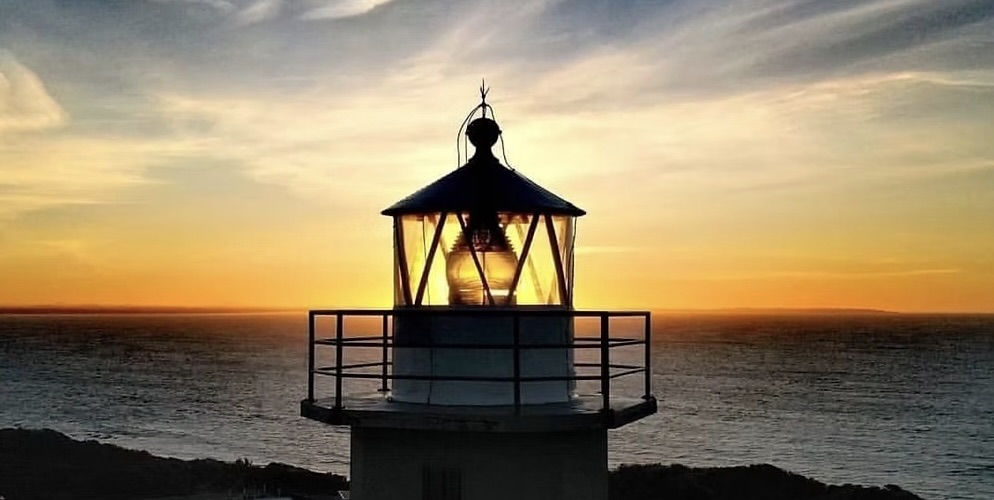
Penguin Island Lighthouse was first lit on 1 October 1878, serving as the primary navigation aid for the treacherous approaches to Rivoli Bay and Beachport for over eight decades. The lighthouse was positioned on an isolated island to provide maximum visibility of both bay approaches and offshore waters, but this created substantial operational challenges.
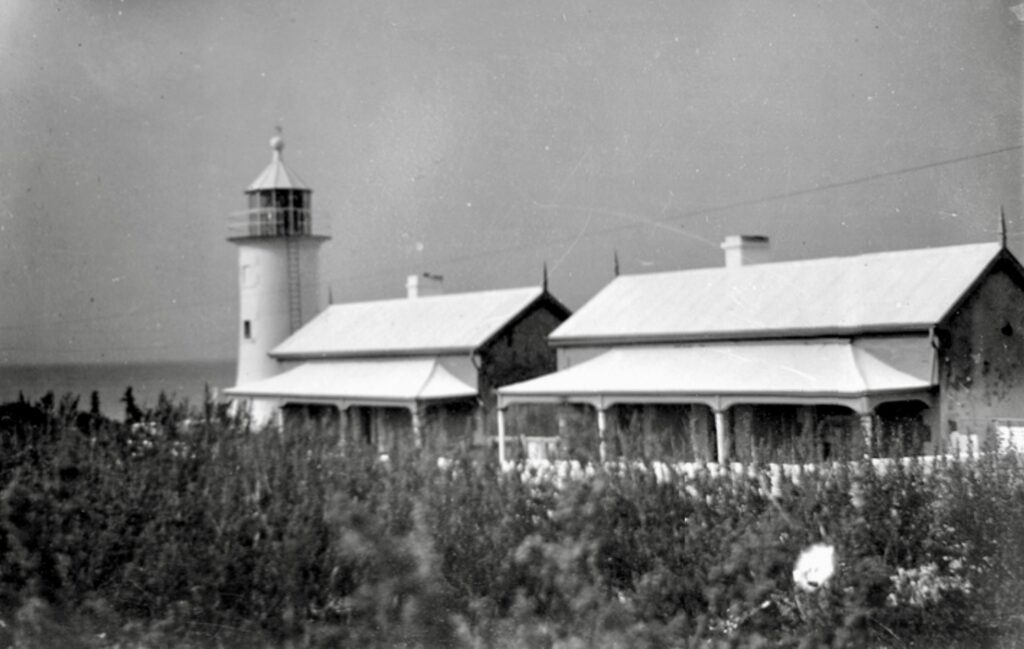
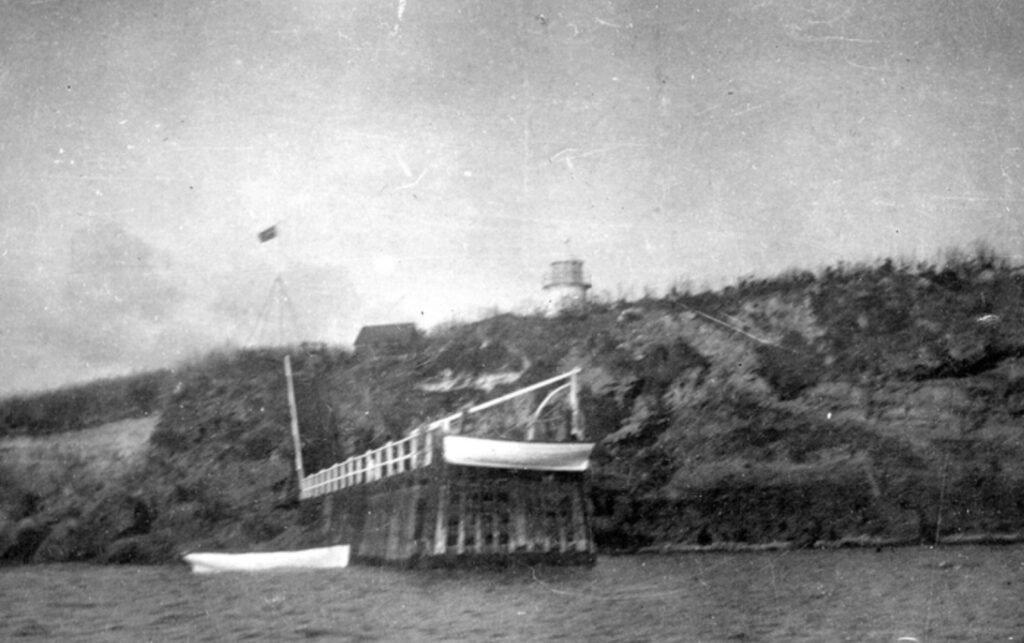
Supplies had to be ferried to the island by boat from Beachport, making this the only means of communication. When emergencies occurred, keepers displayed a flag to signal for help. A jetty was built in 1880 rather than constructing a bridge via Cape Martin Island, which was then attached to the mainland.
The isolation proved dangerous for lighthouse families. In 1904, John Hendry, head keeper of the lighthouse, was lost at sea and presumed drowned, highlighting the maritime risks faced by keepers who had to travel to shore for supplies and emergencies.
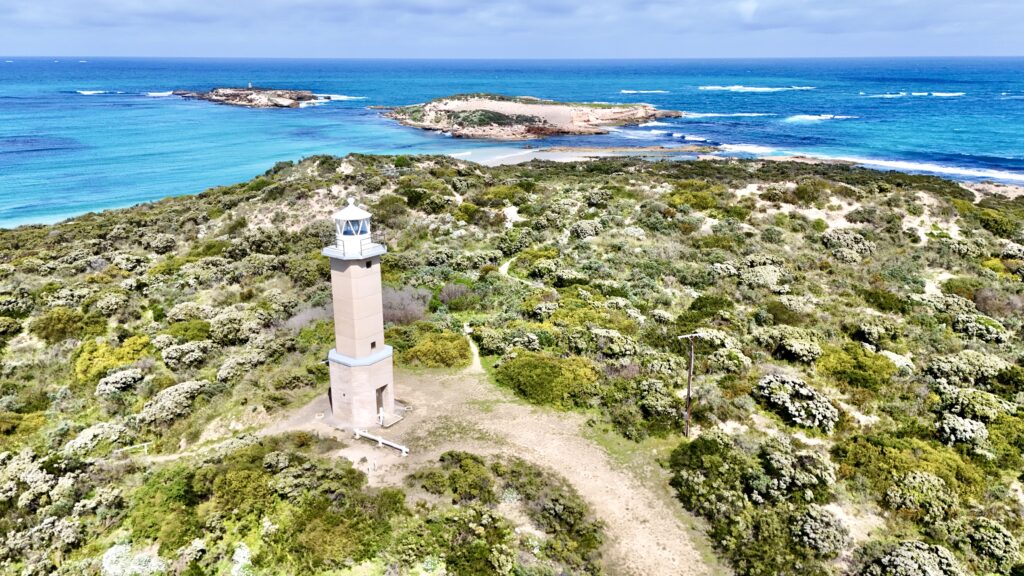
By 1960, the operational difficulties of maintaining the island station led to its decommissioning. The light apparatus was transferred to a new mainland lighthouse at Cape Martin, immediately north of the island, ensuring continued navigation service while eliminating the complex supply and maintenance challenges of island operations.
Cape Martin Lighthouse was first lit in 1960 using the recycled optical equipment from Penguin Island Lighthouse. The original concrete tower stood 4.5m high, but coastal sand dunes gradually obscured the light. In 1980, the tower was raised to 12m to restore visibility. The lighthouse was converted to mains electricity in 1974, improving reliability and reducing maintenance costs.
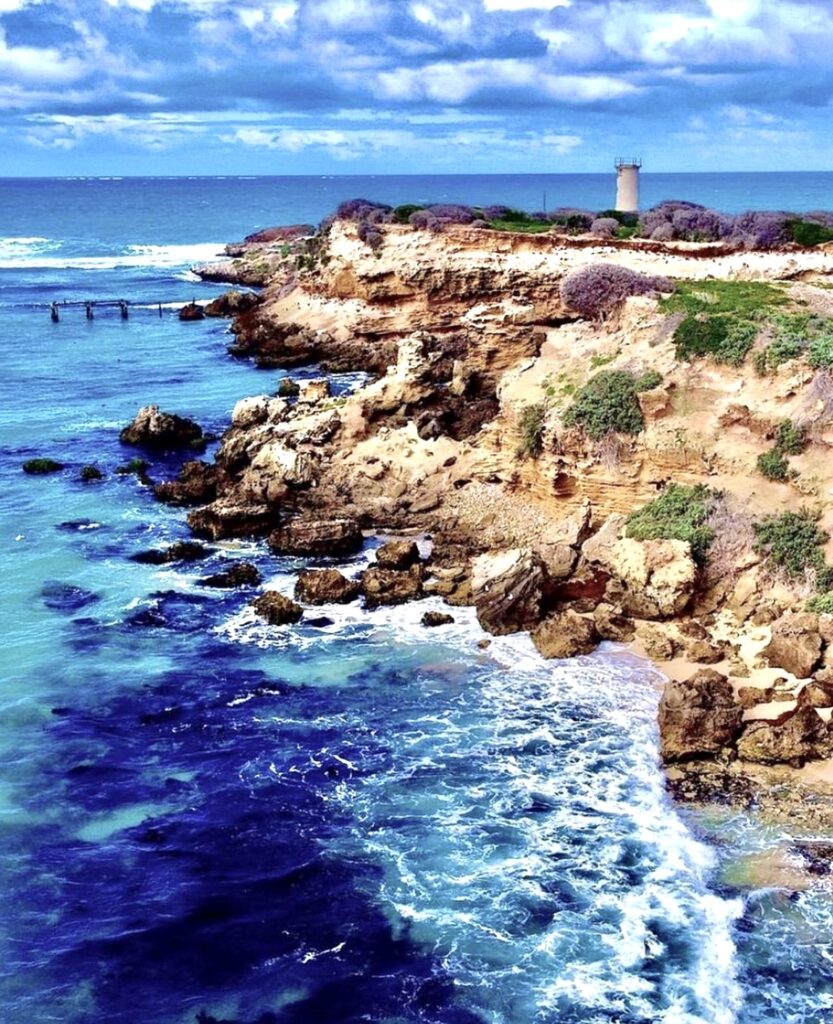
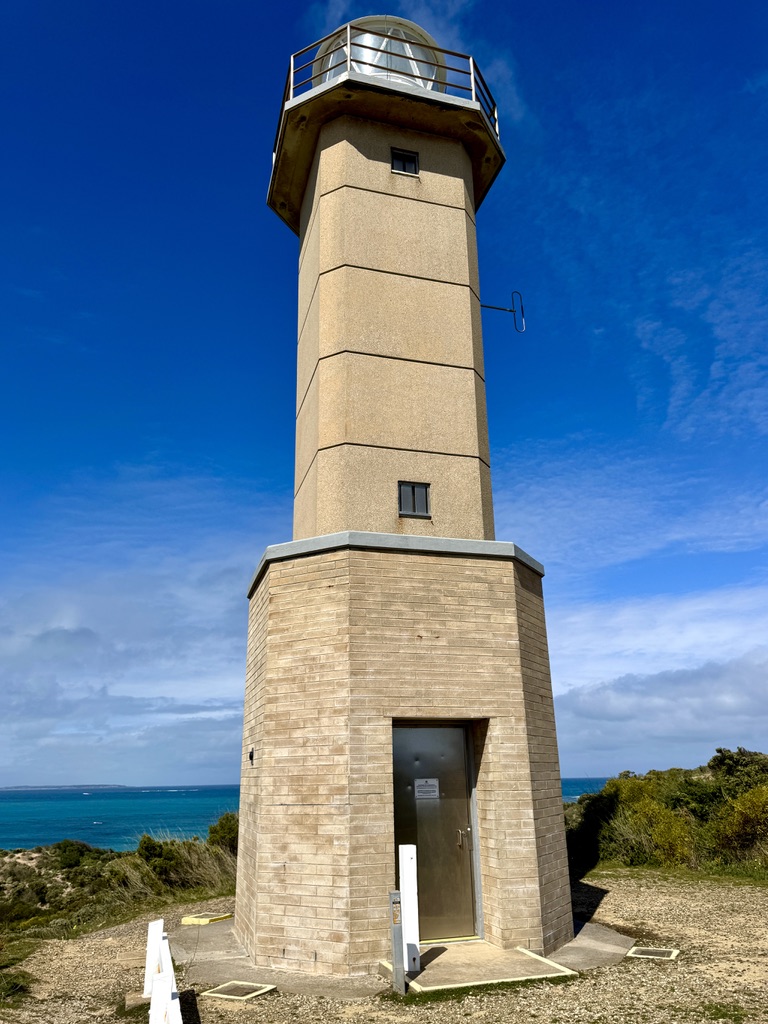
The abandoned Penguin Island lighthouse tower remains on the island as a monument to the lighthouse families who served there. Penguin Island is now a sanctuary for Fairy Penguins and other seabirds, while Cape Martin Lighthouse continues operating as an active navigation aid, serving mariners navigating the complex coastal waters around Rivoli Bay.
Both lighthouses represent the evolution of Australian lighthouse technology and management, from isolated island operations requiring significant human sacrifice to efficient mainland installations that maintain essential navigation services with modern technology and reduced operational risks.
Technical Specifications:
Cape Martin Lighthouse:
First Exhibited: January 1, 1960
Status: Active (Automated)
Location: Cape Martin, near Beachport, South Australia (north end of Rivoli Bay)
Construction: 1960, concrete tower construction
Tower Height: Originally 4.5 metres (1960), raised to 12 metres (1980)
Construction Material: Concrete
Optic: Recycled apparatus from Penguin Island Lighthouse
Electrical Conversion: 1974 (mains power electricity)
Current Light: Automated beacon
Height Modification: 1980 (raised due to sand dune obscuration)
Penguin Island Lighthouse:
First Exhibited: October 1, 1878
Decommissioned: 1960
Status: Abandoned tower remains on island
Location: Penguin Island, north end of Rivoli Bay, South Australia
Construction Period: 1878
Operational Period: 82 years (1878-1960)
Supply Method: Boat ferry from Beachport (jetty built 1880)
Notable Incident: Head keeper John Hendry lost at sea (1904)
Legacy: Optical apparatus transferred to Cape Martin Lighthouse
Current Status: Island serves as wildlife sanctuary for Fairy Penguins and seabirds
Disclaimer: Due to the need to get across the “Top End” in the dry season (which usually ends in October), and to spend time in the outback on the way north I have rushed the first stage of Act 3. In order to document the lighthouses I’ve visited I’ve enlisted the help of Elon Grok and A.I. Claude to help on these Lighthouse Stories. Despite their claims of infallibility I’ve found some of their facts not to be accurate and would welcome any corrections, which they will learn from! I have also sourced a number of photos from the public domain (i.e. Dr Google) to compliment the shots I’ve taken on my travels. I would like to concentrate on telling my personal experiences and thoughts as I travel around and intend to reedit these lighthouse stories when I have time.